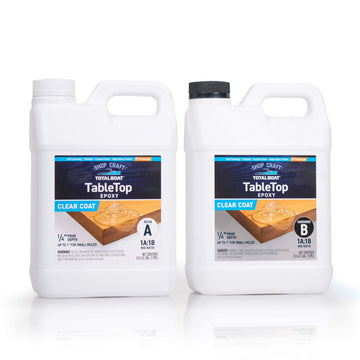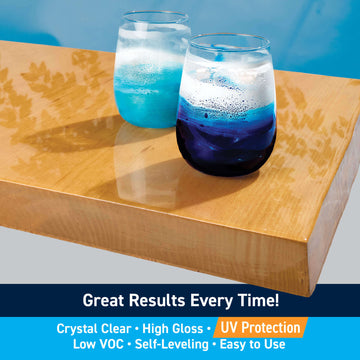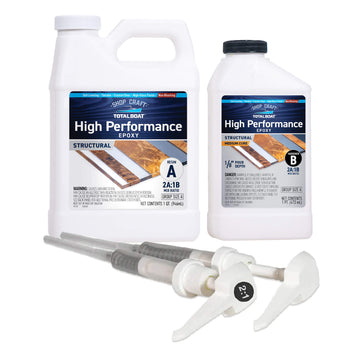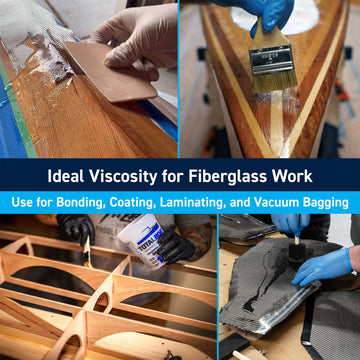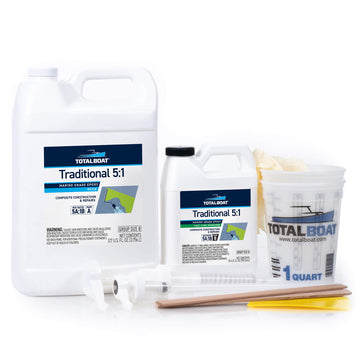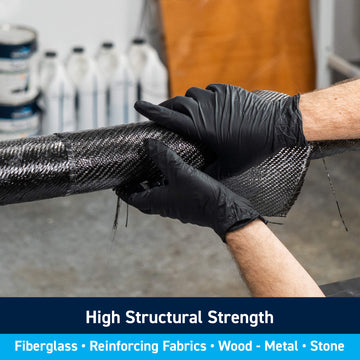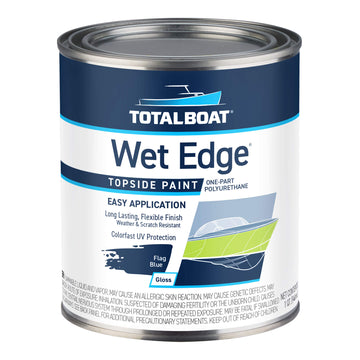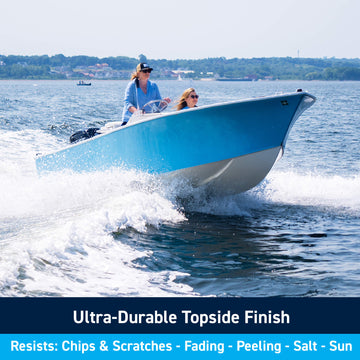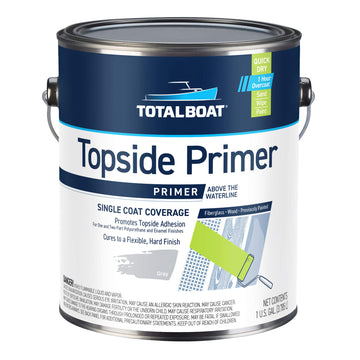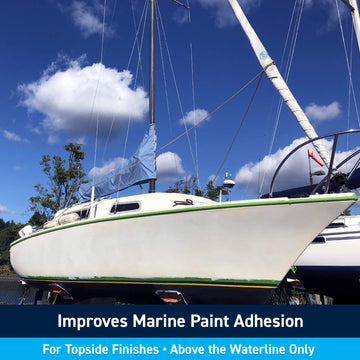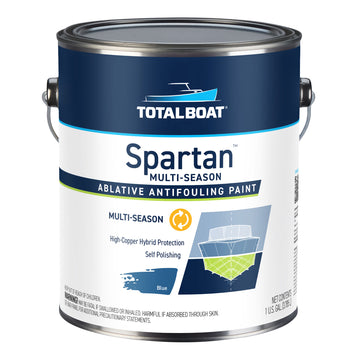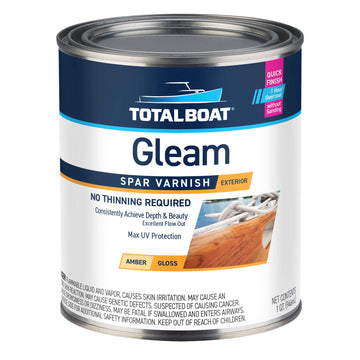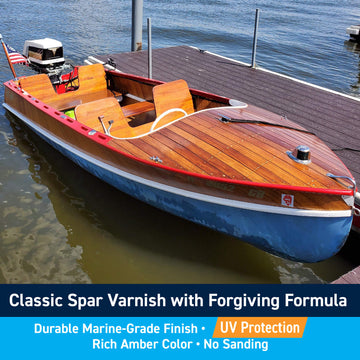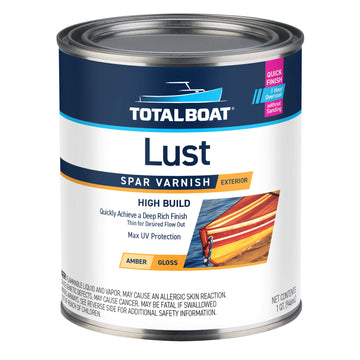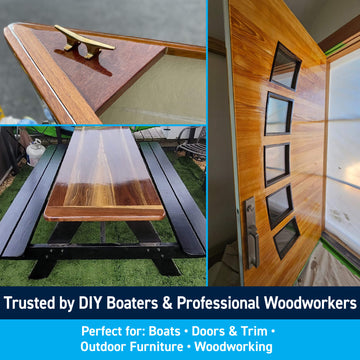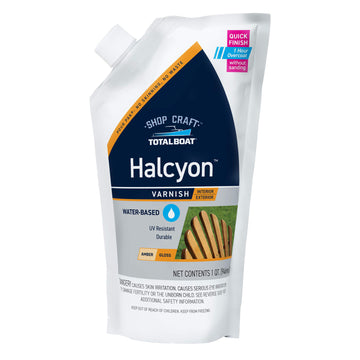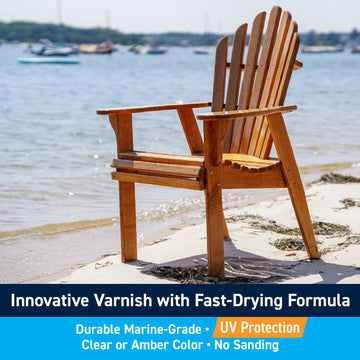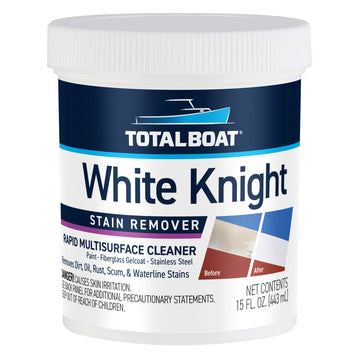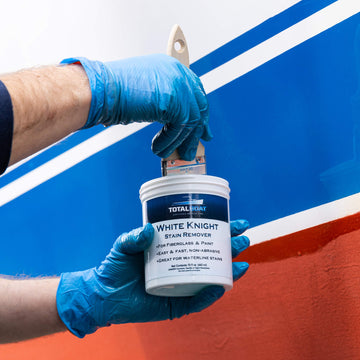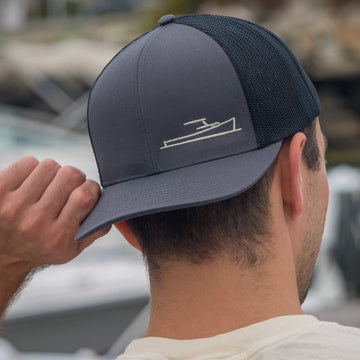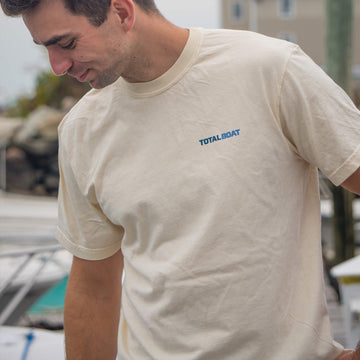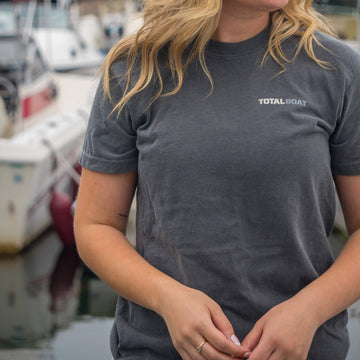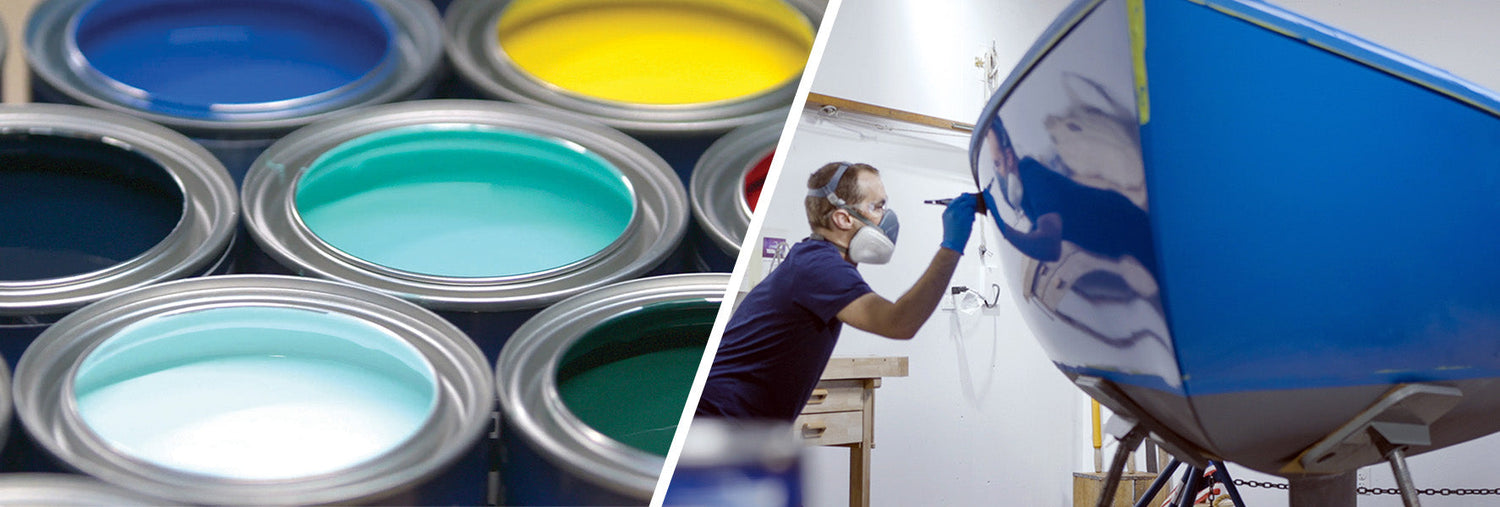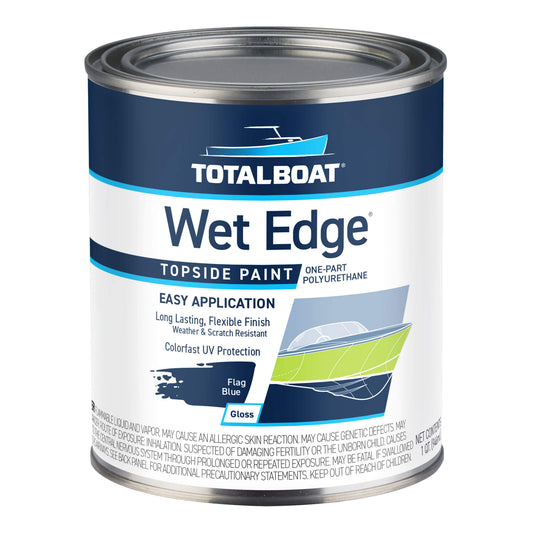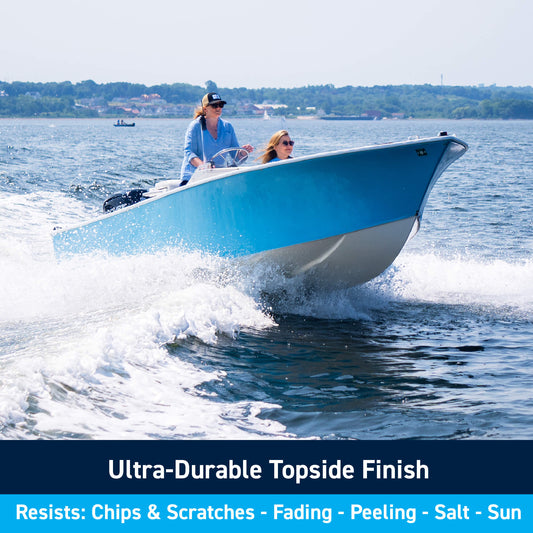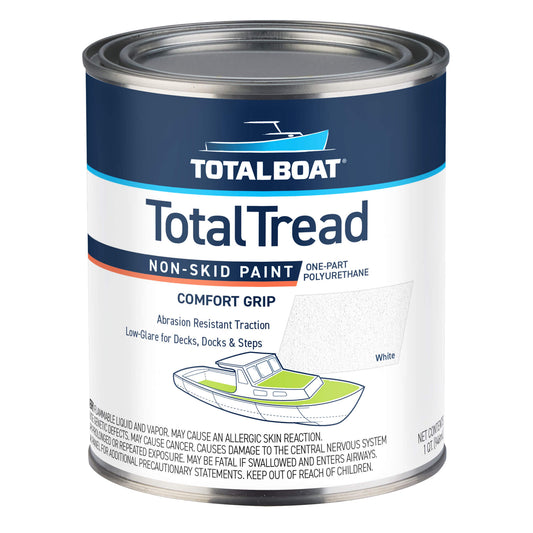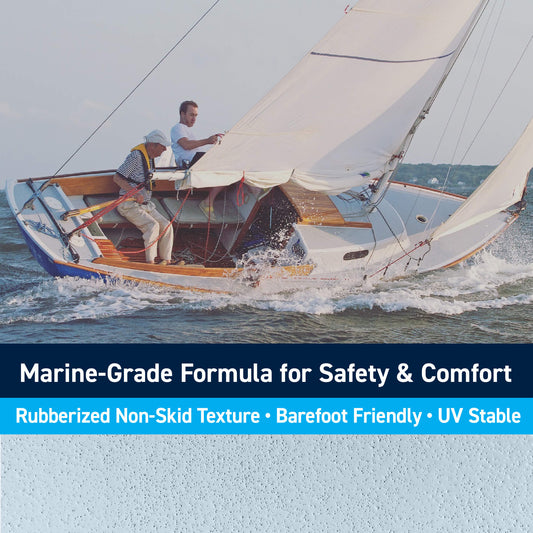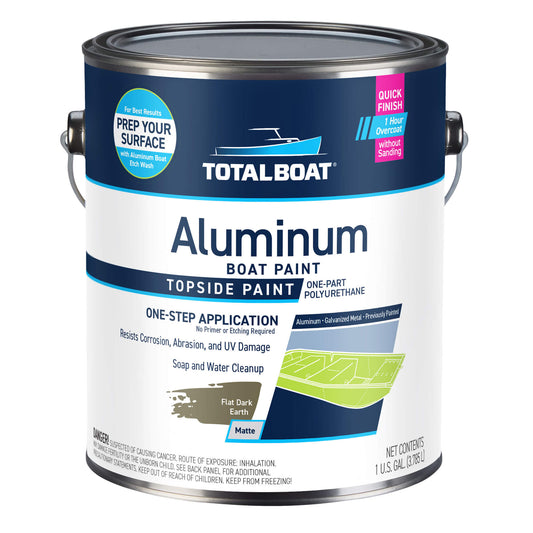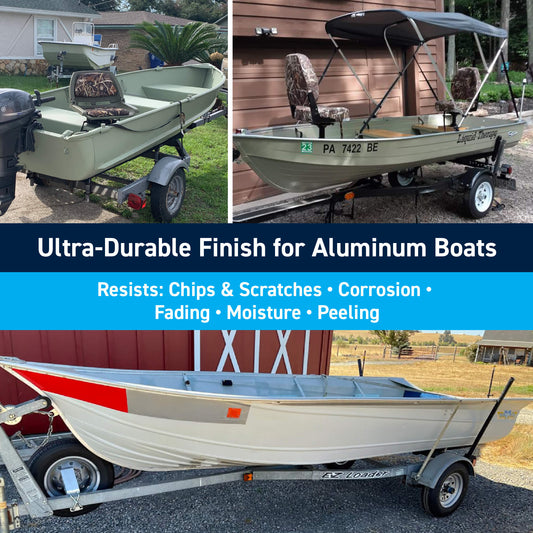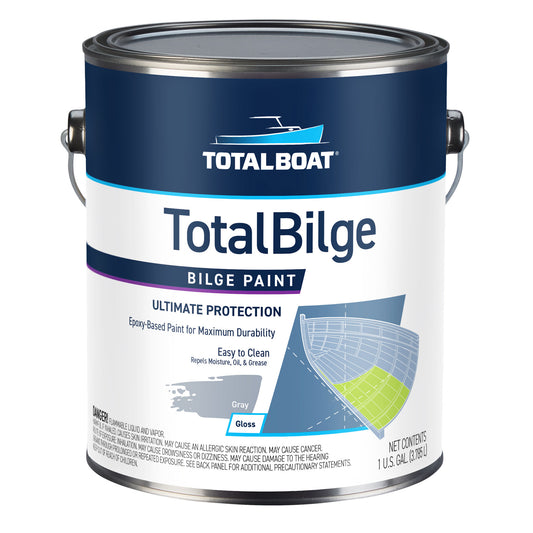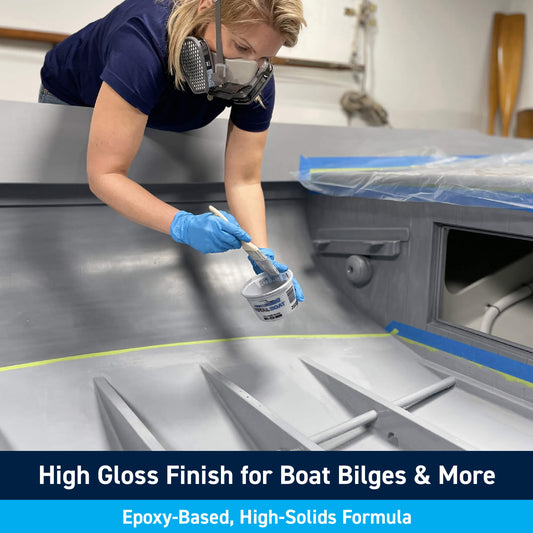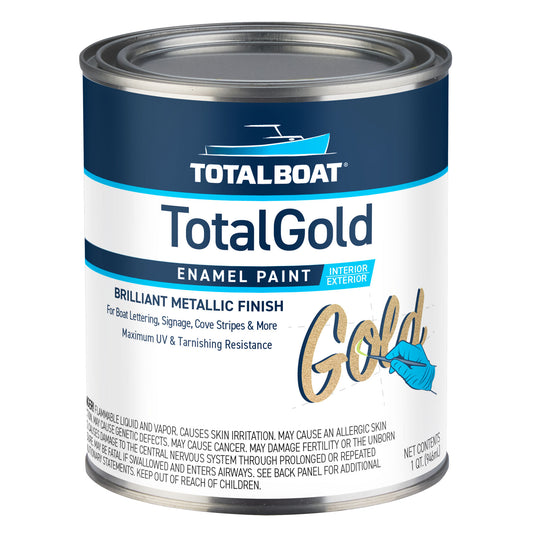TotalTread Non-Skid Marine Deck Paint
Topside Paint
A topside finish is any paint applied above the waterline on a boat, including interior and exterior surfaces such as decks, bilges, cabin walls, and hull sides. Topside paints are formulated to have various properties such as UV resistance, abrasion resistance, color retention, durability and flexibility. Once cured, they also resist cracking, chipping, and peeling, and are much more durable than household paints.
Topside finishes include marine enamel paints and marine-grade polyurethane paints. One-part alkyd enamel paints are easy to apply, and are less expensive than one-part polyurethanes, but they’re not as durable. One-part polyurethanes are durable, easy to apply by brushing, rolling or spraying, have good UV resistance, and good color retention. These paints can be solvent based or water based. Water-based polyurethanes have the added benefits of low odor, low VOCs, and they clean up easily with soap and water.
Different Topside Paints for Different Parts of Your Boat
Choosing the best topside finish for your boat depends on the surface you’re painting, the type of protection needed, and the level of gloss desired.
Boat hulls see a lot of sun and sometimes salt and sand, so they need a coating that’s UV resistant and abrasion resistant. A colorful, high-gloss topside paint will give your boat a head-turning showroom shine, while protecting the surface underneath.
Boat decks require a durable, non-skid paint that prevents slips and falls and holds up under heavy foot traffic. These anti-slip paints typically have a low-sheen finish to prevent glare. You can also make your own non-slip deck paint by blending a non-skid additive into a compatible topside polyurethane paint.
Boat bilges are dank, dirty, oily places that can benefit from an epoxy-based bilge paint that repels any acids, grease, moisture, oil, and solvents that end up there. Painting your bilge makes it easier to maintain, easier to find things you drop in accidentally, and easier to spot problems, such as leaking antifreeze. This type of paint is also ideal for other damp, mildew-prone places such as the anchor locker, the engine room, compartments, and lazarettes.
Interior boat surfaces such as cabin ceilings, cabin walls, cabinets, trim, doors, bulkheads, lockers and lazarettes require a mildew-resistant cabin paint. Both polyurethanes and water-based enamels are suitable. Water-based finishes are easy to apply, easy to clean up, have no harsh fumes, and hold up well to every-day wear and tear.
Boat transoms showcase boat names and custom artwork. For boat lettering, we recommend a gold metallic paint.
